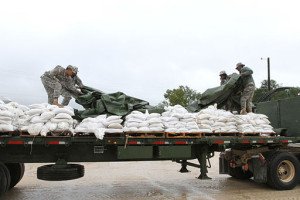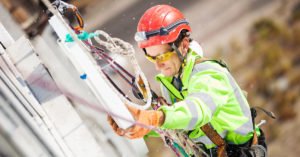
 Our lawyers help injured workers and families throughout Manning and South Carolina who have lost loved ones to work accidents. This is why we are deeply concerned about job site hazards that may have been created by the state’s recent rain and flooding – especially in the areas of trenching and excavation at construction sites.
Our lawyers help injured workers and families throughout Manning and South Carolina who have lost loved ones to work accidents. This is why we are deeply concerned about job site hazards that may have been created by the state’s recent rain and flooding – especially in the areas of trenching and excavation at construction sites.
As the Centers for Disease Control and Prevention (CDC) states, the water content of soil is one of several factors that can impact soil stability and, in turn, influence hazards that trenching and excavation workers face.
We hope contractors and their workers are mindful of rain-soaked soil conditions in the days, weeks and even months ahead.
Soil Stability Could Be Affected by South Carolina’s ‘Prolific’ Rainfall Event
The Associated Press (AP) reports that a combination of weather conditions, including a “fire hose” of tropical moisture produced by Hurricane Joaquin, led to the historic rainfall. The Weather Channel described the rainfall event between October 1 and 5 as “one of the most prolific” in the country’s modern history.
It is startling to see the estimated rainfall totals in some parts of South Carolina. The Weather Channel reports some of those totals as:
City Rain Total (inches)
- Mt. Pleasant 27.15
- Georgetown 23.88
- Kingstree 23.73
- Dalzell 22.78
- Moncks Corner 20.87
The downtown areas of Columbia and Charleston, in fact, received nearly a combined 30 inches of rain.
According to the AP, on October 6, the sun shone in many parts of South Carolina for the first time since September 24. However, short-term hazards remained in several areas such as the Lowcountry, where the Santee, Edisto and many other rivers flow to the sea.
Our law firm is primarily concerned with long-term hazards created by soil instability. As the CDC notes, soil can become unstable when it is high in water content. This raises the risk of a trench collapse or cave-in.
Unfortunately, workers get little to no warning in a trench collapse. The injury risks they face, meanwhile, can be severe. Even one cubic yard of dirt that falls on a trench or excavation worker can weigh as much as 3,000 pounds. A load that heavy could crush, suffocate and possibly kill a worker, the CDC states.
Based on recent data, the CDC estimates that, on average, 35 workers die each year in trenching or excavation accidents.
These accidents commonly occur in the construction of water, sewer and pipelines or in the installation of underground power and communications cables.
Workers Must Pay Attention to Water-Related Trenching, Excavation Hazards
If you are a construction worker who is involved in trenching and excavation work, you should be especially mindful of water-related hazards for the near future. Make sure your employer is taking proper precautions to ensure you and your co-workers are safe.
For instance, because of the risks involved in trenching and excavation work, the Occupational Safety and Health Administration (OSHA) mandates that at least one “protective system” be used in any trench that is dug five feet or deeper.
The four protective systems that OSHA recognizes are:
- Sloping the ground
- Benching the ground
- Shoring the trench with planks or hydraulic jacks
- Shielding the trench with a trench box.
This protective system and the general safety of a trench, including soil stability, should be inspected by a “competent person” every day and before the start of each shift. It should also be inspected after every rainstorm or other event that could increase hazards, according to OSHA.
Additionally, the inspection should take place if there is any indication of conditions that can cause wall collapses and cave-ins: Water seepage, fissures, sloughing, undercutting, tension cracks and bulging at the bottom.
OSHA defines a “competent person” as one who has proper training, experience and knowledge, the ability to detect dangerous soil conditions and the authority to take “prompt corrective measures.”
The competent person must also test the soil to determine if it is “cohesive” enough to work in.
Several tests can be used, including the “plasticity or wet thread test.” This test involves taking a moist soil sample, rolling it into a thin thread and holding it by one end. If the sample breaks or tears, it is not cohesive.
Finally, in addition to inspections, OSHA requires that special precautions be taken for preventing standing water and water accumulation, including:
- Using special support or shield systems
- Using water removal equipment where needed
- Giving safety harnesses and lifelines to workers
- Diverting surface water away from the trench
- Getting workers out of the trench if a storm hits.
If you are a worker, the CDC suggests that you:
- Inspect any trench before entering
- Never enter an unprotected trench
- Exit the trench and notify a competent person if you suspect any hazards
- Never assume there will be a warning sign of a cave-in.
Our South Carolina Worker’s Compensation Attorneys Are Here for You
At Land Parker Welch LLC our worker’s compensation attorneys extend our thoughts and prayers to everyone impacted by this storm in South Carolina, and we hope everyone stays safe in the days ahead.
